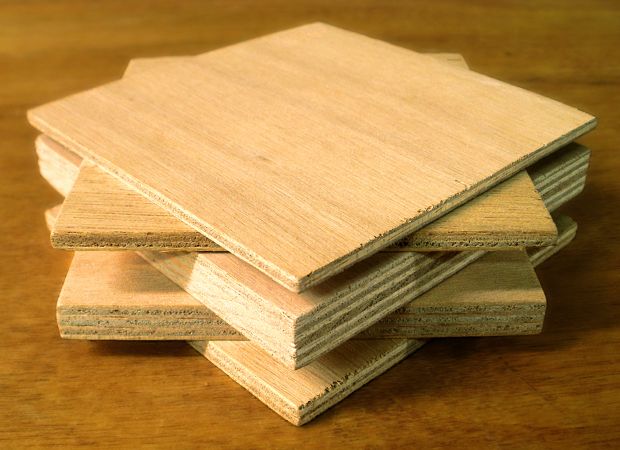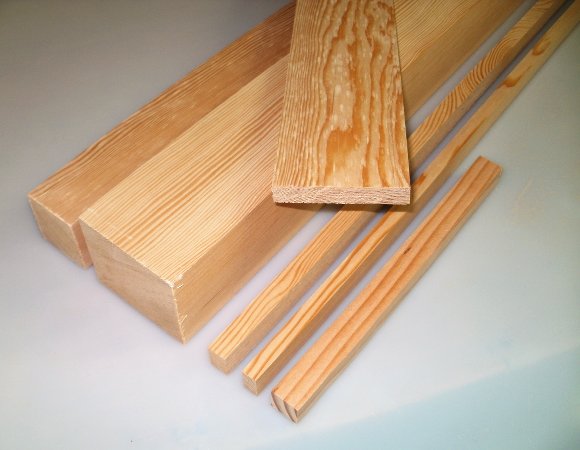Wood for Boat Building
Plywood

High quality Okoume marine plywood in various thicknesses
Most stitch-and-glue boats should be built from marine grade Mahogany plywood. There are several types of Mahogany plywood that may be used, but African Okoume is the most economical and the most common. Other species, such as Khaya and Sapele are also suitable, if a little heavier.
When buying Mahogany plywood, look for a stamp reading BS1088 – this is the minimum grade acceptable for boat building. We strongly recommend that you only use plywood from Lloyds-approved mills; this is a higher standard with thicker veneers and fewer voids, hence it also meets BS1088. All the plywood we use and supply is produced in Lloyds Approved mills and certified to the BS 1088 marine plywood standard.
A few builders have built stitch-and-glue boats from exterior-grade wood that often has very thin face veneers and may contain voids. Unless the boat being built is specifically designed to be built from exterior grade plywood, this is a foolish and potentially dangerous practice. Exterior grade panels often contain voids that can cause the panel to suddenly crack, making it unsuitable for building hulls. In addition, the exterior veneers – most important for strength – are often very thin. Exterior grade panels also take more time to finish than the better marine grades, so you'll lose in time what you'll have saved in cost. Finally, consider that even with Lloyds-approved marine plywood, the plywood panels are less than a third of the total cost of the materials used in most boats. If a panel fails you'll have wasted not only the plywood, but also expensive fibreglass, epoxy and other materials.
Solid wood

Planed Douglas Fir
There is relatively little solid wood used in stitch-and-glue boats. A huge variety of species are acceptable. Let one thing be your guide: the wood must take glue well. Oily woods such as Teak or White Oak tend to repel epoxy. Softer woods like Spruce, Pine, Fir, Cedar, Cypress and Juniper glue well and are likely to be available in knot-free lengths. Don't worry much about rot; thoroughly epoxy-coated boats are largely exempt from that terror.
Most of the parts such as sheer clamps, carlins, deck beams and seat risers can be made from any strong but light wood that takes glue well, such as Ash or Douglas Fir. Sapele is another good choice for decorative parts such as rubrails, gunwales, trim strips and coamings. If a boat has a Sapele deck, a lighter trim looks nice.
The wood should be largely clear (free of knots). Wood won't bend properly if there are large knots, although knots smaller than a pencil eraser seldom do any harm.
The grain should be as straight as possible. Watch for run-out, or areas where the grain runs off the board, and for twisty grain. These affect the strength and bending properties of the wood.
Also avoid warped boards. Warping is caused by changes in the humidity of the wood. Minor warp is usually cancelled out when bent into a boat, but severe warp will make it frustrating to fit a part.
The timber should take and hold fasteners strongly. Wood that is too hard to drive a nail in, or too soft to accept a screw without splitting, is to be avoided.
Several of our boat designs call for freestanding wooden masts – you'll want the cleanest picks from the pile for these critical struts. A traditional choice is Sitka Spruce, but hardly anyone can afford it any more, even if they can find it. Douglas Fir is clear and strong but can be rather heavy. Unlike most woods, Douglas Fir boards with loose, not tight, grain are best. Western Red Cedar is very light and available in beautifully clear lengths, but it has a very strong and splintery grain which can tear out easily, so shape it cautiously with sharp tools. A good material for masts is plain Spruce, which has the right combination of strong grain and light weight that makes perfect spars. It's very hard to find clear boards, but small tight knots are acceptable.
Scarf joints
It often isn't possible to obtain lengths of wood as long as you need for stringers, rubrails or masts. You will need to cut a simple 8:1 scarf joint to make these lengths. Scarfs are very strong and won't affect the bending properties of the wood. If you must choose between short lengths of good quality timber or long lengths of questionable quality, take the shorter pieces and plan on a few scarfs. It's better than working around knots.
